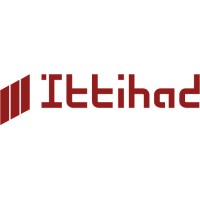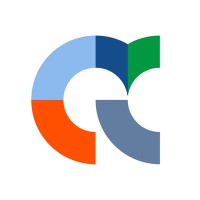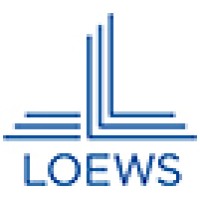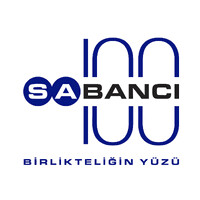
Al Muhaidib Group Company Cyber Security Posture
muhaidib.comAl Muhaidib Group is an international private group of companies based in Saudi Arabia that was founded in 1943 by the late Abdulkadir Al Muhaidib. The current Chairman of the Board of Directors is Sulaiman A. Al Muhaidib. The main interest of the company was selling wholesale building materials and then later in 1959 A.K Al Muhaidib & Sons Co. began importing food products specifically marketing and distributing rice. This sector has remained a core business for the Group and has allowed the company to expand its portfolio to include other grains and eventually leading to the establishment of a retail outlet chain, Giant Stores (later merged with Panda). Today the Group is active in five key sectors: Food, Real Estate, Building Materials, Construction and Utilities & Infrastructure.
AMG Company Details
al-muhaidib-group
10,001+ employees
57480
523
Investment Management
muhaidib.com
Scan still pending
AL _3158005
In-progress
Between 900 and 1000
This score is AI-generated and less favored by cyber insurers, who prefer the TPRM score.
 AMG Global Score
AMG Global Score.png)

Al Muhaidib Group Company Scoring based on AI Models
| Model Name | Date | Description | Current Score Difference | Score |
|---|---|---|---|---|
| AVERAGE-Industry | 03-12-2025 | This score represents the average cybersecurity rating of companies already scanned within the same industry. It provides a benchmark to compare an individual company's security posture against its industry peers. | N/A | Between 900 and 1000 |
Al Muhaidib Group Company Cyber Security News & History
| Entity | Type | Severity | Impact | Seen | Url ID | Details | View |
|---|
Al Muhaidib Group Company Subsidiaries

Al Muhaidib Group is an international private group of companies based in Saudi Arabia that was founded in 1943 by the late Abdulkadir Al Muhaidib. The current Chairman of the Board of Directors is Sulaiman A. Al Muhaidib. The main interest of the company was selling wholesale building materials and then later in 1959 A.K Al Muhaidib & Sons Co. began importing food products specifically marketing and distributing rice. This sector has remained a core business for the Group and has allowed the company to expand its portfolio to include other grains and eventually leading to the establishment of a retail outlet chain, Giant Stores (later merged with Panda). Today the Group is active in five key sectors: Food, Real Estate, Building Materials, Construction and Utilities & Infrastructure.
Access Data Using Our API

Get company history
.png)
AMG Cyber Security News
Top 100 Arab Family Businesses 2025
This year's list showcases the dominance of GCC countries, with 33 companies from Saudi Arabia, 32 from the U.A.E., and eight from Qatar. Saudi ...
Saudi Arabia’s ‘Hiba’ initiative to provide education to Down Syndrome children
Prince Saud toured the center to learn about its diagnostic, educational, and rehabilitative facilities, which serve students with Down Syndrome ...
Al Muhaidib Group advances its digital transformation strategy
Al Muhaidib Group is undergoing digital transformation across its 93 affiliates, covering five key sectors: building materials, food, contracting, utilities ...
The Central Bank of Uzbekistan held a meeting with the management of Acwa Power
A meeting was held at the Central Bank of Uzbekistan with Abdulhamid Al-Muhaidib, Financial Director of Acwa Power (Saudi Arabia).
KSA companies dominate Forbes Middle East’s family business rankings
FASTFACTS. • The release stated that of the top 100 family-run companies in 2022, eight were owned by Arab billionaires. • Algeria-based Cevital ...
Where are the best places to work in Saudi Arabia in 2023?
Al Dabbagh Group, Chalhoub Group, PepsiCo and Hilton top the list as companies increasingly focus on work-life balance.
Al-Muhaidib Group selects CitiXsys as retail solution partner
None
NADEC, Del Monte to establish joint venture
The announcement added that the agreement aims to establish manufacturing facilities to supply fresh products and process french fries, juice, ...
Who’s Who: Raed Al-Mudaiheem, Jeddah Airports Company chairman
Raed Al-Mudaiheem has been the chairman of the board of directors of Jeddah Airports Company since July 2021. He has also been the chairman of ...

AMG Similar Companies

Ittihad International Investment LLC
Ittihad International Investment LLC (“The Company”) is a conglomerate that develops and manages a diversified, non-oil and gas investment portfolio in the Middle East and Egypt and has steadily grown to become a market leader in each of its verticals: o Industrials -Consumer Goods -Infrast

Dubai World
Global holding company Dubai World focuses on the strategic growth areas of Transport & Logistics, Drydocks & Maritime, Urban Development, Investment & Financial Services. Our portfolio contains some of the world’s leading companies in their industries, including Drydocks World, Economic Zones Wo

Self Employed Trader
This company and site will work as a landing page for self-employed traders of all 'flavors'. Content will be coming in the near future. Looking to share ideas, information, and network with other self employed traders. In the mean time, check out www.bigmiketrading.com for tons of great informati

Empresas Copec
Empresas Copec participa en dos grandes áreas de actividad: recursos naturales y energía. A lo largo de 89 años, la Compañía ha impulsado importantes programas de inversión, elevando la escala de sus operaciones, ampliando sus fronteras, aprovechando sinergias y entregando sostenibilidad a sus act

Loews Corporation
Loews Corporation is a diversified company with a mix of public and private subsidiaries: CNA Financial Corporation (NYSE: CNA), Boardwalk Pipelines, Loews Hotels & Co. and Altium Packaging. For more information please visit www.loews.com. At Loews, we don’t show movies, at least not anymore, and

Sabanci Holding
Sabancı Holding is one of Turkey’s leading conglomerate, engaged in a wide variety of business activities through its subsidiaries and affiliates, mainly in the banking, financial services, energy, industrials, building materials and retail sectors. Our Group companies most of which are leaders i

Frequently Asked Questions (FAQ) on Cybersecurity Incidents
AMG CyberSecurity History Information
Total Incidents: According to Rankiteo, AMG has faced 0 incidents in the past.
Incident Types: As of the current reporting period, AMG has not encountered any cybersecurity incidents.
Total Financial Loss: The total financial loss from these incidents is estimated to be {total_financial_loss}.
Cybersecurity Posture: The company's overall cybersecurity posture is described as Al Muhaidib Group is an international private group of companies based in Saudi Arabia that was founded in 1943 by the late Abdulkadir Al Muhaidib. The current Chairman of the Board of Directors is Sulaiman A. Al Muhaidib. The main interest of the company was selling wholesale building materials and then later in 1959 A.K Al Muhaidib & Sons Co. began importing food products specifically marketing and distributing rice. This sector has remained a core business for the Group and has allowed the company to expand its portfolio to include other grains and eventually leading to the establishment of a retail outlet chain, Giant Stores (later merged with Panda). Today the Group is active in five key sectors: Food, Real Estate, Building Materials, Construction and Utilities & Infrastructure..
Detection and Response: The company detects and responds to cybersecurity incidents through {description_of_detection_and_response_process}.
Incident Details
Incident 1: Ransomware Attack
Title: {Incident_Title}
Description: {Brief_description_of_the_incident}
Date Detected: {Detection_Date}
Date Publicly Disclosed: {Disclosure_Date}
Date Resolved: {Resolution_Date}
Type: {Type_of_Attack}
Attack Vector: {Attack_Vector}
Vulnerability Exploited: {Vulnerability}
Threat Actor: {Threat_Actor}
Motivation: {Motivation}
Incident 2: Data Breach
Title: {Incident_Title}
Description: {Brief_description_of_the_incident}
Date Detected: {Detection_Date}
Date Publicly Disclosed: {Disclosure_Date}
Date Resolved: {Resolution_Date}
Type: {Type_of_Attack}
Attack Vector: {Attack_Vector}
Vulnerability Exploited: {Vulnerability}
Threat Actor: {Threat_Actor}
Motivation: {Motivation}
Common Attack Types: As of now, the company has not encountered any reported incidents involving common cyberattacks.
Identification of Attack Vectors: The company identifies the attack vectors used in incidents through {description_of_identification_process}.
Impact of the Incidents
Incident 1: Ransomware Attack
Financial Loss: {Financial_Loss}
Data Compromised: {Data_Compromised}
Systems Affected: {Systems_Affected}
Downtime: {Downtime}
Operational Impact: {Operational_Impact}
Conversion Rate Impact: {Conversion_Rate_Impact}
Revenue Loss: {Revenue_Loss}
Customer Complaints: {Customer_Complaints}
Brand Reputation Impact: {Brand_Reputation_Impact}
Legal Liabilities: {Legal_Liabilities}
Identity Theft Risk: {Identity_Theft_Risk}
Payment Information Risk: {Payment_Information_Risk}
Incident 2: Data Breach
Financial Loss: {Financial_Loss}
Data Compromised: {Data_Compromised}
Systems Affected: {Systems_Affected}
Downtime: {Downtime}
Operational Impact: {Operational_Impact}
Conversion Rate Impact: {Conversion_Rate_Impact}
Revenue Loss: {Revenue_Loss}
Customer Complaints: {Customer_Complaints}
Brand Reputation Impact: {Brand_Reputation_Impact}
Legal Liabilities: {Legal_Liabilities}
Identity Theft Risk: {Identity_Theft_Risk}
Payment Information Risk: {Payment_Information_Risk}
Average Financial Loss: The average financial loss per incident is {average_financial_loss}.
Commonly Compromised Data Types: The types of data most commonly compromised in incidents are {list_of_commonly_compromised_data_types}.
Incident 1: Ransomware Attack
Entity Name: {Entity_Name}
Entity Type: {Entity_Type}
Industry: {Industry}
Location: {Location}
Size: {Size}
Customers Affected: {Customers_Affected}
Incident 2: Data Breach
Entity Name: {Entity_Name}
Entity Type: {Entity_Type}
Industry: {Industry}
Location: {Location}
Size: {Size}
Customers Affected: {Customers_Affected}
Response to the Incidents
Incident 1: Ransomware Attack
Incident Response Plan Activated: {Yes/No}
Third Party Assistance: {Yes/No}
Law Enforcement Notified: {Yes/No}
Containment Measures: {Containment_Measures}
Remediation Measures: {Remediation_Measures}
Recovery Measures: {Recovery_Measures}
Communication Strategy: {Communication_Strategy}
Adaptive Behavioral WAF: {Adaptive_Behavioral_WAF}
On-Demand Scrubbing Services: {On_Demand_Scrubbing_Services}
Network Segmentation: {Network_Segmentation}
Enhanced Monitoring: {Enhanced_Monitoring}
Incident 2: Data Breach
Incident Response Plan Activated: {Yes/No}
Third Party Assistance: {Yes/No}
Law Enforcement Notified: {Yes/No}
Containment Measures: {Containment_Measures}
Remediation Measures: {Remediation_Measures}
Recovery Measures: {Recovery_Measures}
Communication Strategy: {Communication_Strategy}
Adaptive Behavioral WAF: {Adaptive_Behavioral_WAF}
On-Demand Scrubbing Services: {On_Demand_Scrubbing_Services}
Network Segmentation: {Network_Segmentation}
Enhanced Monitoring: {Enhanced_Monitoring}
Incident Response Plan: The company's incident response plan is described as {description_of_incident_response_plan}.
Third-Party Assistance: The company involves third-party assistance in incident response through {description_of_third_party_involvement}.
Data Breach Information
Incident 2: Data Breach
Type of Data Compromised: {Type_of_Data}
Number of Records Exposed: {Number_of_Records}
Sensitivity of Data: {Sensitivity_of_Data}
Data Exfiltration: {Yes/No}
Data Encryption: {Yes/No}
File Types Exposed: {File_Types}
Personally Identifiable Information: {Yes/No}
Prevention of Data Exfiltration: The company takes the following measures to prevent data exfiltration: {description_of_prevention_measures}.
Handling of PII Incidents: The company handles incidents involving personally identifiable information (PII) through {description_of_handling_process}.
Ransomware Information
Incident 1: Ransomware Attack
Ransom Demanded: {Ransom_Amount}
Ransom Paid: {Ransom_Paid}
Ransomware Strain: {Ransomware_Strain}
Data Encryption: {Yes/No}
Data Exfiltration: {Yes/No}
Ransom Payment Policy: The company's policy on paying ransoms in ransomware incidents is described as {description_of_ransom_payment_policy}.
Data Recovery from Ransomware: The company recovers data encrypted by ransomware through {description_of_data_recovery_process}.
Regulatory Compliance
Incident 1: Ransomware Attack
Regulations Violated: {Regulations_Violated}
Fines Imposed: {Fines_Imposed}
Legal Actions: {Legal_Actions}
Regulatory Notifications: {Regulatory_Notifications}
Incident 2: Data Breach
Regulations Violated: {Regulations_Violated}
Fines Imposed: {Fines_Imposed}
Legal Actions: {Legal_Actions}
Regulatory Notifications: {Regulatory_Notifications}
Regulatory Frameworks: The company complies with the following regulatory frameworks regarding cybersecurity: {list_of_regulatory_frameworks}.
Ensuring Regulatory Compliance: The company ensures compliance with regulatory requirements through {description_of_compliance_measures}.
Lessons Learned and Recommendations
Incident 1: Ransomware Attack
Lessons Learned: {Lessons_Learned}
Incident 2: Data Breach
Lessons Learned: {Lessons_Learned}
Incident 1: Ransomware Attack
Recommendations: {Recommendations}
Incident 2: Data Breach
Recommendations: {Recommendations}
Key Lessons Learned: The key lessons learned from past incidents are {list_of_key_lessons_learned}.
Implemented Recommendations: The company has implemented the following recommendations to improve cybersecurity: {list_of_implemented_recommendations}.
References
Additional Resources: Stakeholders can find additional resources on cybersecurity best practices at {list_of_additional_resources}.
Investigation Status
Incident 1: Ransomware Attack
Investigation Status: {Investigation_Status}
Incident 2: Data Breach
Investigation Status: {Investigation_Status}
Communication of Investigation Status: The company communicates the status of incident investigations to stakeholders through {description_of_communication_process}.
Stakeholder and Customer Advisories
Incident 1: Ransomware Attack
Stakeholder Advisories: {Stakeholder_Advisories}
Customer Advisories: {Customer_Advisories}
Incident 2: Data Breach
Stakeholder Advisories: {Stakeholder_Advisories}
Customer Advisories: {Customer_Advisories}
Advisories Provided: The company provides the following advisories to stakeholders and customers following an incident: {description_of_advisories_provided}.
Initial Access Broker
Incident 1: Ransomware Attack
Entry Point: {Entry_Point}
Reconnaissance Period: {Reconnaissance_Period}
Backdoors Established: {Backdoors_Established}
High Value Targets: {High_Value_Targets}
Data Sold on Dark Web: {Yes/No}
Incident 2: Data Breach
Entry Point: {Entry_Point}
Reconnaissance Period: {Reconnaissance_Period}
Backdoors Established: {Backdoors_Established}
High Value Targets: {High_Value_Targets}
Data Sold on Dark Web: {Yes/No}
Monitoring and Mitigation of Initial Access Brokers: The company monitors and mitigates the activities of initial access brokers through {description_of_monitoring_and_mitigation_measures}.
Post-Incident Analysis
Incident 1: Ransomware Attack
Root Causes: {Root_Causes}
Corrective Actions: {Corrective_Actions}
Incident 2: Data Breach
Root Causes: {Root_Causes}
Corrective Actions: {Corrective_Actions}
Post-Incident Analysis Process: The company's process for conducting post-incident analysis is described as {description_of_post_incident_analysis_process}.
Corrective Actions Taken: The company has taken the following corrective actions based on post-incident analysis: {list_of_corrective_actions_taken}.
Additional Questions
General Information
Ransom Payment History: The company has {paid/not_paid} ransoms in the past.
Last Ransom Demanded: The amount of the last ransom demanded was {last_ransom_amount}.
Last Attacking Group: The attacking group in the last incident was {last_attacking_group}.
Incident Details
Most Recent Incident Detected: The most recent incident detected was on {most_recent_incident_detected_date}.
Most Recent Incident Publicly Disclosed: The most recent incident publicly disclosed was on {most_recent_incident_publicly_disclosed_date}.
Most Recent Incident Resolved: The most recent incident resolved was on {most_recent_incident_resolved_date}.
Impact of the Incidents
Highest Financial Loss: The highest financial loss from an incident was {highest_financial_loss}.
Most Significant Data Compromised: The most significant data compromised in an incident was {most_significant_data_compromised}.
Most Significant System Affected: The most significant system affected in an incident was {most_significant_system_affected}.
Response to the Incidents
Third-Party Assistance in Most Recent Incident: The third-party assistance involved in the most recent incident was {third_party_assistance_in_most_recent_incident}.
Containment Measures in Most Recent Incident: The containment measures taken in the most recent incident were {containment_measures_in_most_recent_incident}.
Data Breach Information
Most Sensitive Data Compromised: The most sensitive data compromised in a breach was {most_sensitive_data_compromised}.
Number of Records Exposed: The number of records exposed in the most significant breach was {number_of_records_exposed}.
Ransomware Information
Highest Ransom Demanded: The highest ransom demanded in a ransomware incident was {highest_ransom_demanded}.
Highest Ransom Paid: The highest ransom paid in a ransomware incident was {highest_ransom_paid}.
Regulatory Compliance
Highest Fine Imposed: The highest fine imposed for a regulatory violation was {highest_fine_imposed}.
Most Significant Legal Action: The most significant legal action taken for a regulatory violation was {most_significant_legal_action}.
Lessons Learned and Recommendations
Most Significant Lesson Learned: The most significant lesson learned from past incidents was {most_significant_lesson_learned}.
Most Significant Recommendation Implemented: The most significant recommendation implemented to improve cybersecurity was {most_significant_recommendation_implemented}.
References
Most Recent Source: The most recent source of information about an incident is {most_recent_source}.
Most Recent URL for Additional Resources: The most recent URL for additional resources on cybersecurity best practices is {most_recent_url}.
Investigation Status
Current Status of Most Recent Investigation: The current status of the most recent investigation is {current_status_of_most_recent_investigation}.
Stakeholder and Customer Advisories
Most Recent Stakeholder Advisory: The most recent stakeholder advisory issued was {most_recent_stakeholder_advisory}.
Most Recent Customer Advisory: The most recent customer advisory issued was {most_recent_customer_advisory}.
Initial Access Broker
Most Recent Entry Point: The most recent entry point used by an initial access broker was {most_recent_entry_point}.
Most Recent Reconnaissance Period: The most recent reconnaissance period for an incident was {most_recent_reconnaissance_period}.
Post-Incident Analysis
Most Significant Root Cause: The most significant root cause identified in post-incident analysis was {most_significant_root_cause}.
Most Significant Corrective Action: The most significant corrective action taken based on post-incident analysis was {most_significant_corrective_action}.
What Do We Measure?
















Every week, Rankiteo analyzes billions of signals to give organizations a sharper, faster view of emerging risks. With deeper, more actionable intelligence at their fingertips, security teams can outpace threat actors, respond instantly to Zero-Day attacks, and dramatically shrink their risk exposure window.
These are some of the factors we use to calculate the overall score:
Identify exposed access points, detect misconfigured SSL certificates, and uncover vulnerabilities across the network infrastructure.
Gain visibility into the software components used within an organization to detect vulnerabilities, manage risk, and ensure supply chain security.
Monitor and manage all IT assets and their configurations to ensure accurate, real-time visibility across the company's technology environment.
Leverage real-time insights on active threats, malware campaigns, and emerging vulnerabilities to proactively defend against evolving cyberattacks.




